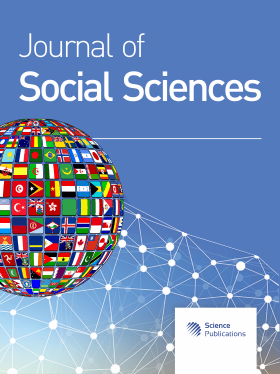Socio-Economic Statues and Physical Activity Levels of 3th Grade Students: A Case Study in Istanbul Beykoz Province
Abstract
Problem statement: The children and adolescent period is critical time to acquire positive lifestyle habits. The aim of this study is to investigate the physical activity level of children aged between 9-10 accordance with their BMI’s and socio-economic level of their school environments. This study also reviewed the articles about physical activity level of children, its relation to their socio-economic status and some other related tasks. Inactive life style sustained together with bad eating habits brings many healthy problems such as obesity and cardiovascular disease Approach: Technological development brings with it improving life style causing sedentary life for the public in developed and also developing Country. Physical activity can be viewed as a form of healthy life because it predicts functioning and adaptation and offers capabilities that enable people to live healthy. In this purposed three different socio-economic levels of six schools were determined accordance with declaration of National Education Department in Beykoz province. Each couple of school reflected one’s Socio-Economic Status (SES). Totally 250 students from three different SES were participated (low-SES, n = 92; middle-SES, n = 73; high-SES, n = 85). Student’s height and weight were measured and their Body Mass Index (BMI) was determined. BMIs were classified according to Cole’s BMI tables which were underweight, normal, overweight and obese. Children Physical Activity Questionnaire (CPAQ), which is proposed by World Health Organization, was used for assessment of their Physical Activity Level (PAL). Data from the questionnaires was collected in a suitable relational database and analyzed with SPSS statistical package. Logit log linear analysis was applied to understand the trend of qualitative variables (SES, BMIs and PALs). Objective: The aim of this study is to investigate the physical activity level of children aged between 9-10 accordance with their BMI’s and socio-economic level of their school environments. Results and Conclusion: It was observed that the effects of SES, gender and BMI on PAL were not statistically significant (p>0.05). On the other hand, there were a significant interaction between PAL and SES (p<0.01); PAL, SES and BMI (p<0.05); and also PAL, SES and Gender (p<0.05). The results would be more reliable when the study performed in big population and different provinces of the big cities in further studies.
DOI: https://doi.org/10.3844/jssp.2011.331.337

- 7,047 Views
- 4,002 Downloads
- 2 Citations
Download
Keywords
- Socio-Economic Status (SES)
- Physical Activity Level (PAL)
- Body Mass Index (BMI)
- Children Physical Activity Questionnaire (CPAQ)
- via accelerometry
- skinny group
- obese children
- logit loglinear
- pediatric clinicians
- scholastic aptitude tests
- metabolic equivalent
